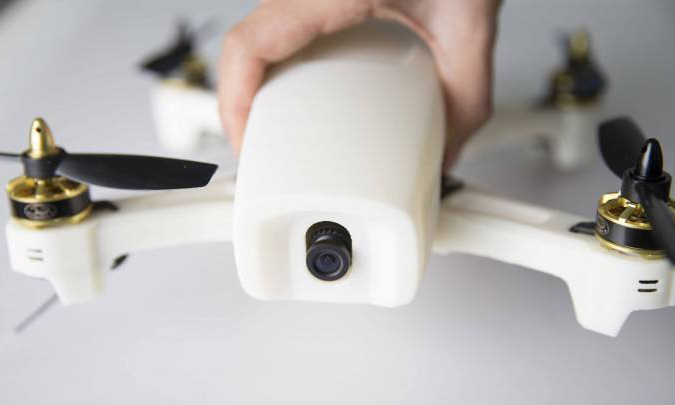Regulation and Innovation The Challenge of 4th industrial revolution
Posted By Amandine Richardot on Apr 19, 2017 | 0 comments
Innovation is a challenge for regulation, and, in many ways, regulation is a slowing factor for innovation. This can be explained in simple terms: innovation is fast, and, these days, it goes faster and faster, disrupting the way we communicate, create, consume, live; on the other hand, regulation is slow, and it needs to be: it takes into account the social impact of technology, its potential uses, abuses and complications.
In the context of the 4th Industrial revolution, the difference of pace between regulation and innovation is absolutely key: how to create policies fast enough to follow ever evolving technology?
In today’s article, we will explore some of the areas that are related to 3D printing, and pose specific issues when it comes to regulation, with a focus on 5 main examples: the drone industry, the 3D printing medical field, the 3D printing construction field, the issue of responsibility and that of intellectual property.
Why is tech so fast and regulation so slow?
Most of the time, law is not ready to face technological innovation. Why is it so? Tech companies grow fast. Very fast. It’s actually one of their main characteristics. As a result, they also innovate extremely fast. The reason is simple: if you’re a startup, you need to achieve growth and profit in a short period of time. If you don’t succeed, your company will fail. In such a situation, current regulations are not the top-of-mind priority of entrepreneurs. They innovate, hoping that regulation will go in the same direction.
As a result, it usually takes less time to innovate than to regulate an innovation. It takes even longer in France than in the United States, for instance, due to our different legal systems. In the first case, the whole system is based on Roman Law, where you have to change the whole law to make something legal. In the second one, it is based on Common Law, which gives more freedom of interpretation to the judge. That’s why it is easier to innovate in the US, thanks to a faster evolving regulation.
Now that we understood why the 4th industrial revolution is leading to regulation challenges, we can focus on some of the issues it raises.
A typical example: the regulation of drones
To illustrate these challenges, we can focus on the drones example. It is a promising technology that has good chances of becoming one of the pillars of modern delivery. Of course, it can be extremely useful for a commercial use, but not only. For instance, it can be a true revolution for health access in isolated areas (where you can hardly go by road). You can deliver medication in those places, even if there are some natural constraints.
As we said before, with innovation comes regulatory issues. Many factors need to be taken into account by policy makers when it comes to drone flying: the risk of accident is high, the potential for sky traffic jams needs to be thought of, as well as how camera-equipped drones, flying freely, could be a danger for personal privacy and professional discretion. It’s also key to take into account the current situation of the technology, while also planning for its future development: it’s not the same thing to regulate drone flying when it touches 2% of the population and a few consumer goods companies, and when 60% of people use it and it’s the main delivery mode. That’s why regulation for this innovation is both highly needed and highly difficult. But which rules would be the right ones for this technology? If they imposed very strict limits, they could complicate the development of this industry. For instance, in the United States, you now have to always be able to see your drone when it’s flying. Thus, it’s impossible to make long distance deliveries. As a result, regulation is creating strong limits to the drone business.
In a fascinating interview, Robert Cheek, from the 3D printed drone manufacturing company UVify, told us that drone racing, and recreational drone flying, was not only the fastest-growing sport in history, but also the sport that best embodies the 4th industrial revolution: it is where esport meets the material world. But what it is missing at the moment is a specific regulation system. In Korea, where First Person View flying (FPV) is developing particularly rapidly, some “free flying zones” are starting to appear in the streets. One can imagine that “no flying zones” will appear as well.
Regulation for 3D Printing in the medical field
The reasons why regulating innovations in medicine is a slow process are quite obvious: any new treatment methods needs to be thoroughly checked for potential risks in order to be as safe as possible, and accepted by society and doctors. 3D printing in the medical industry is no exception. Even though the applications of 3D printing in medicine are blooming, from 3D printed implants to 3D printing prostheses and even 3D printed hearts, the legislation is not yet ready for every application.
We talked with Professor Daniel Kelly, researcher at the Trinity College in Dublin, who developed a process to 3D print bones and cartilage. Just like Robert Cheek, he told us that the process was ready and would revolutionize the way bone and cartilage implants are done… in probably a decade. The technology exists, it still needs to pass all the checks and regulation processes before it can have an effect on society.
3D Printing in the construction field: the issue of insurance and public space
3D Printing will disrupt the construction field, as it has been proven by the many companies already 3D printing buildings in a few hours at a low cost and with very little workforce. 3D printing is planned to be used to build in remote areas… and in areas as remote as the Moon or Mars!
But these very impressive and futuristic projects come with a much less glamorous issue: that of insurance.
We talked with Philippe Morel, co-founder of the French construction company xTreee, which 3D prints cement buildings. He told us that, because 3D printing is so new in construction, and not yet recognized as safe, a 3D printed building cannot be insured by any insurance company, and cannot be used in a public space. Of course, these two limitations mean that, because of the risks incurred, most private individuals won’t, in the current state of legislation, order their 3D printed house and get it within 24 hours, even though the market and technology are probably ready for it. It also means that public investment can’t go into the field yet. xTreee found a temporary solution to create a 3D printing building in a public space anyway, by pouring classical concrete into the 3D printed pillar, in order to go around the regulation issue. This was a symbolic step forward for 3D printing in construction, towards a normative acceptance of the process.
Responsibility: an important issue for 3D printing and all new technologies
Many incidents can happen when using digital products or services, like Artificial Intelligence and 3D printing. In the first case, it’s quite complex to chose who is responsible in case of a problem. Autonomous vehicles perfectly illustrate this point. In the case of an accident, who is responsible? The driver, who is actually not driving? The company who designed the car? The company who sold it?
When it comes to 3D printing, responsibility is also at stake. What happens if there is a problem with the product? If someone gets hurt because of the 3D printed object? Who is responsible? The designer who created the 3D file? The person who 3D printed it? The company who built the 3d printer? What if it was ordered from a 3D printing service, then sold by a professional retailer?
Intellectual property: a real challenge for 3D printing
3D printing offers great creative possibilities. But this freedom creates some problems. You can easily duplicate existing objects protected by copyright, without paying anything. As a result, counterfeiting becomes extremely simple. Because of this, interest for the subject of intellectual property in 3D printing grows.
As a 3D printing company, we pay a lot of attention to these issues. Here at Sculpteo, we do our best to protect intellectual property. That’s why we refuse to 3D print objects if you don’t own their rights or if they are not rights-free.
Moreover, there is an important detail to point out. When you are purchasing 3D printing services on the Sculpteo website, you are buying it to the French part of our company, Sculpteo France (as opposed to its American equivalent, Sculpteo Inc.). Thus, French intellectual property laws apply to this transaction, even if you’re in another country.
For further information on intellectual property and 3d printing, you can read our ebook on the subject: ‘3D printing & intellectual property: what are your rights in Europe and the US?’
If you’re a French speaker, you can also check the video of our conference about ‘3D printing & intellectual property’:


 Connect with Google
Connect with Google Connect with Facebook
Connect with Facebook

